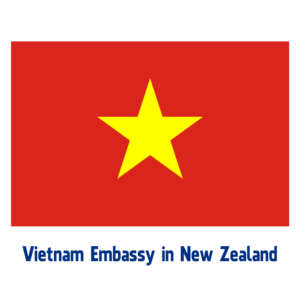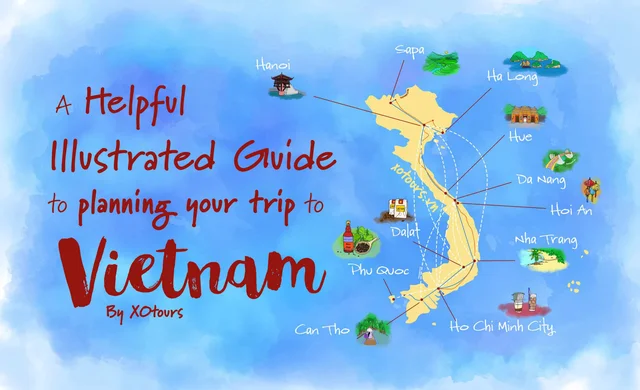
Top Vietnam Travel Tips for the Ultimate Adventure
Top must-visit destinations in Vietnam
Vietnam is a beautiful country known for its picturesque landscapes, rich history, and unique culture. From bustling cities to serene countryside, Vietnam has something for everyone. If you’re planning a trip to Vietnam, here are some of the best places to visit:
1. Hanoi: The capital city of Vietnam is famous for its ancient temples, colonial architecture, and delicious street food. Don’t miss the chance to explore the Old Quarter, the Temple of Literature, and the Hoan Kiem Lake.
2. Halong Bay: A UNESCO World Heritage Site, Halong Bay is a spectacular natural wonder with thousands of limestone islands and islets rising from the turquoise water. Take a cruise to admire the stunning scenery and visit the floating villages.
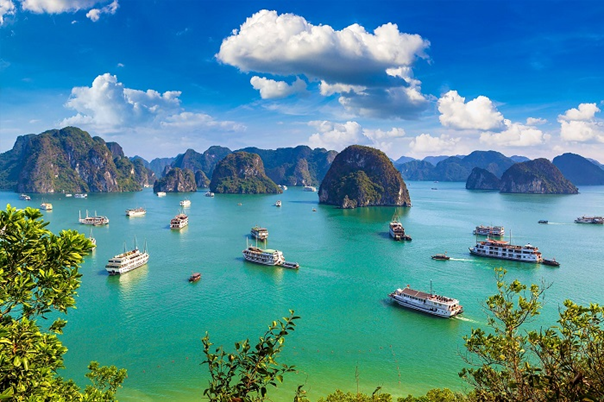
Halong Bay
3. Hue: Known as the Imperial City, Hue is home to the ancient citadel and the tombs of the Nguyen emperors. The city is also famous for its traditional cuisine, such as bun bo Hue and banh khoai.
4. Hoi An: This charming town in central Vietnam is a must-visit for its well-preserved ancient architecture, lantern-lit streets, and colorful markets. Don’t forget to try the local specialties, such as cao lau and white rose dumplings.
5. Ho Chi Minh City: The largest city in Vietnam, Ho Chi Minh City (formerly known as Saigon) boasts a vibrant mix of modern and traditional. Visit the War Remnants Museum, the Notre-Dame Cathedral, and
What is the best time to visit Vietnam?
Vietnam is a country that offers travelers an array of unique and unforgettable experiences. From exploring the bustling cities to discovering the natural beauty of the countryside, Vietnam has something to offer for every type of traveler. However, choosing the best time to visit Vietnam can be a daunting task, considering the country’s varied climate and topography.
The best time to visit Vietnam largely depends on what you want to see and do. In general, the country can be divided into three distinct regions: the north, central, and south. Each region has its own unique climate and weather patterns, making it important to consider the best time to visit each area.
Northern Vietnam, which includes Hanoi, Halong Bay, and Sapa, has four distinct seasons. The best time to visit this region is during the spring (March – April) and autumn (September – November) months, as the weather is mild and pleasant. During these months, the skies are clear, temperatures are comfortable, and the countryside is green and lush.

Central Vietnam, which includes Hue, Danang, and Hoi An, has a tropical savanna climate with only two seasons – rainy and dry. The rainy season typically lasts from September to December, and the dry season lasts from January to August. The best time to visit this region is during the dry season, when the sun is shining, and the weather is warm.
Southern Vietnam, which includes Ho Chi Minh City, the Mekong Delta, and Phu Quoc Island.
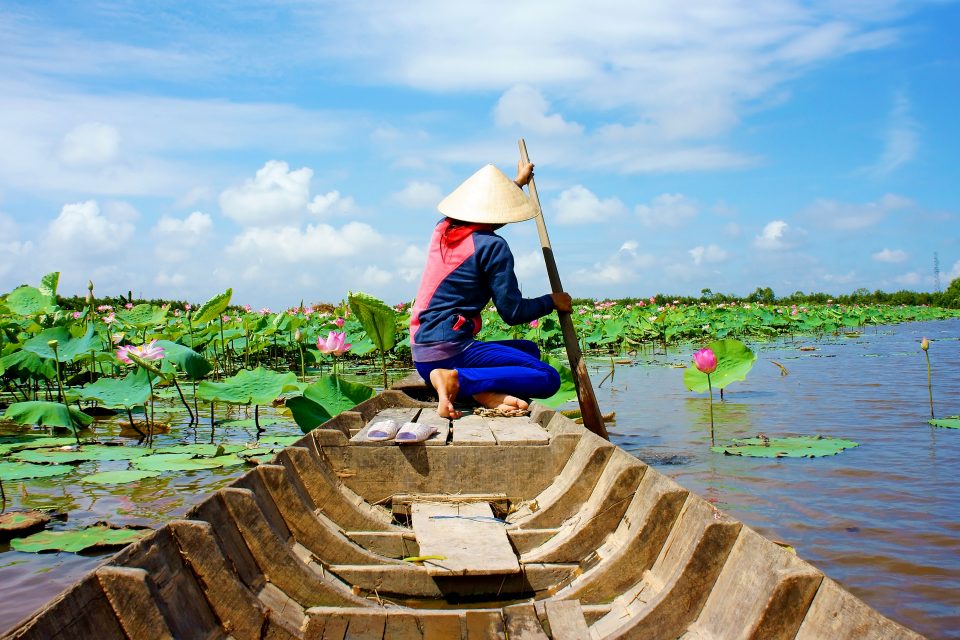
How long should I stay in Vietnam?
Determining the length of your stay in Vietnam depends on various factors such as your budget, itinerary, and personal preferences. Vietnam is a fascinating country with plenty to offer visitors, from the vibrant cities to the stunning landscapes and rich culture. To make the best of your visit, we recommend staying for at least two weeks to explore the country’s diverse regions.
During your stay in Vietnam, you can start by exploring the bustling cities of Hanoi and Ho Chi Minh City, each offering unique cultural experiences. You can also take a scenic trip along the coastline or visit the picturesque countryside, including the famous rice paddies. Vietnam is known for its delicious cuisine, so be sure to indulge in local dishes and street foods throughout your trip.
If you have more time, we recommend venturing out to the lesser-known regions of Vietnam, such as the northern mountains or the Mekong Delta in the south. These areas offer a more authentic experience of Vietnam’s culture and are less frequented by tourists.
Overall, the length of your stay in Vietnam ultimately depends on your personal preferences and travel goals. We recommend spending a minimum of two weeks to experience the country’s diverse regions, culture, and cuisine. However, if you have the opportunity to stay longer, take advantage of it and explore the lesser-known regions for a more authentic experience.
What are the must-see attractions in Vietnam?
Vietnam is a country brimming with natural beauty, rich history, and diverse culture. From the bustling streets of Ho Chi Minh City to the serene beaches of Nha Trang, Vietnam has something to offer for every kind of traveler. If you are planning a trip to Vietnam, here are some must-see attractions that you should include in your itinerary:
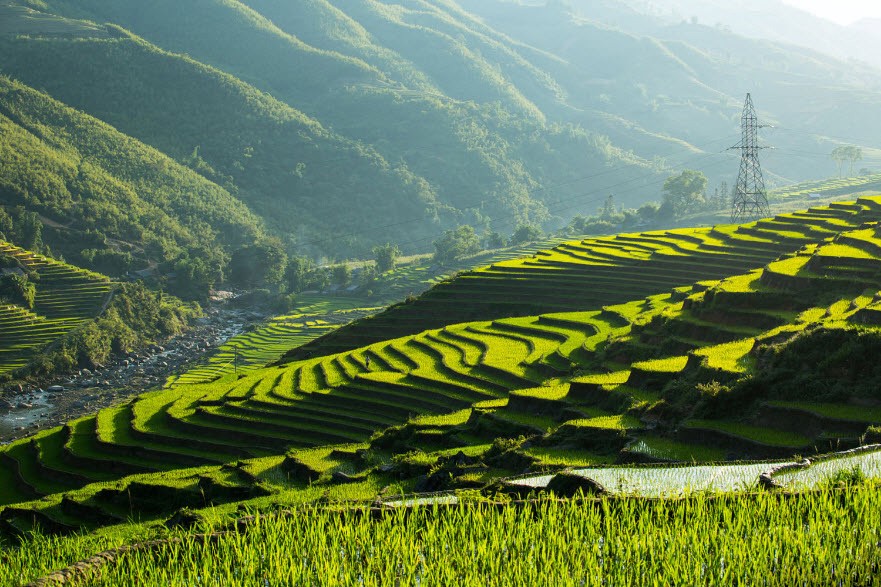
Ha Long Bay – famous for its limestone islands and emerald waters, Ha Long Bay is a World Heritage Site that offers breathtaking scenery.
Ho Chi Minh City – formerly known as Saigon, Ho Chi Minh City is a bustling metropolis that offers a great mix of history, culture, and modernity.
Hoi An Ancient Town – recognized as a UNESCO World Heritage Site, Hoi An is a charming town with a unique blend of Vietnamese, Chinese, and Japanese architecture.
Hue Imperial City – situated on the banks of the Perfume River, Hue is known for its ancient citadel, palaces, and temples.
Sapa – located in the Northern Highlands, Sapa is famous for its rice terraces, ethnic minority villages, and scenic mountain landscapes.
Phong Nha-Ke Bang National Park – home to some of the world’s largest caves and underground rivers, Phong Nha-Ke Bang is a natural wonder that should not be missed…
These are just some of the must-see attractions in Vietnam. There are many more sights and experiences that Vietnam has to offer, so plan your visit accordingly.
What is the currency used in Vietnam?
Vietnam’s official currency is the Vietnamese Dong (VND). The Dong is denoted by the symbol “₫” and is issued by the State Bank of Vietnam. It is available in banknotes of various denominations including 1,000, 2,000, 5,000, 10,000, 20,000, 50,000, 100,000, 200,000, and 500,000 Dong.
When traveling to Vietnam, it is advisable to exchange your currency to Dong at official exchange offices, banks, or ATMs. It is important to note that in many places in Vietnam, especially outside of the main cities, cash is the preferred method of payment. Credit cards are often accepted in hotels, restaurants, and shops in larger cities, but it is always best to carry some Dong with you for smaller purchases or if you plan to travel to more remote areas.
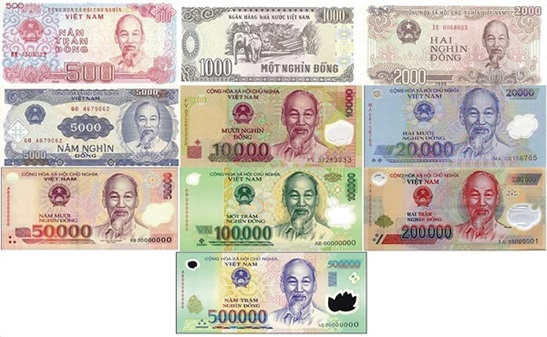
It is also useful to keep in mind that some vendors may try to take advantage of tourists who do not know the current exchange rate. Therefore, it is recommended to check the current exchange rate before exchanging your currency, and to count your change carefully when making purchases.
In summary, the official currency of Vietnam is the Vietnamese Dong. It is advisable to exchange your currency at official exchange offices or banks and to carry cash with you, especially when traveling to more rural areas. Remember to check the exchange rate and count your change carefully to avoid any misunderstandings or discrepancies.
What is the best way to get around Vietnam?
Vietnam is a beautiful country with a diverse landscape, from bustling cities to serene countryside. As a visitor to this country, getting around can be a daunting task, especially if you are unfamiliar with the local transportation options. In this blog post, we will take a closer look at the best ways to get around Vietnam.
1. Motorbike
One of the most popular and exciting ways to get around Vietnam is by motorbike. It is an affordable option, and it gives you the freedom to explore the country at your own pace. However, it is important to note that traffic in Vietnam can be chaotic, and the rules of the road are not always followed. If you are not an experienced rider, it is best to hire a driver or take a guided tour.
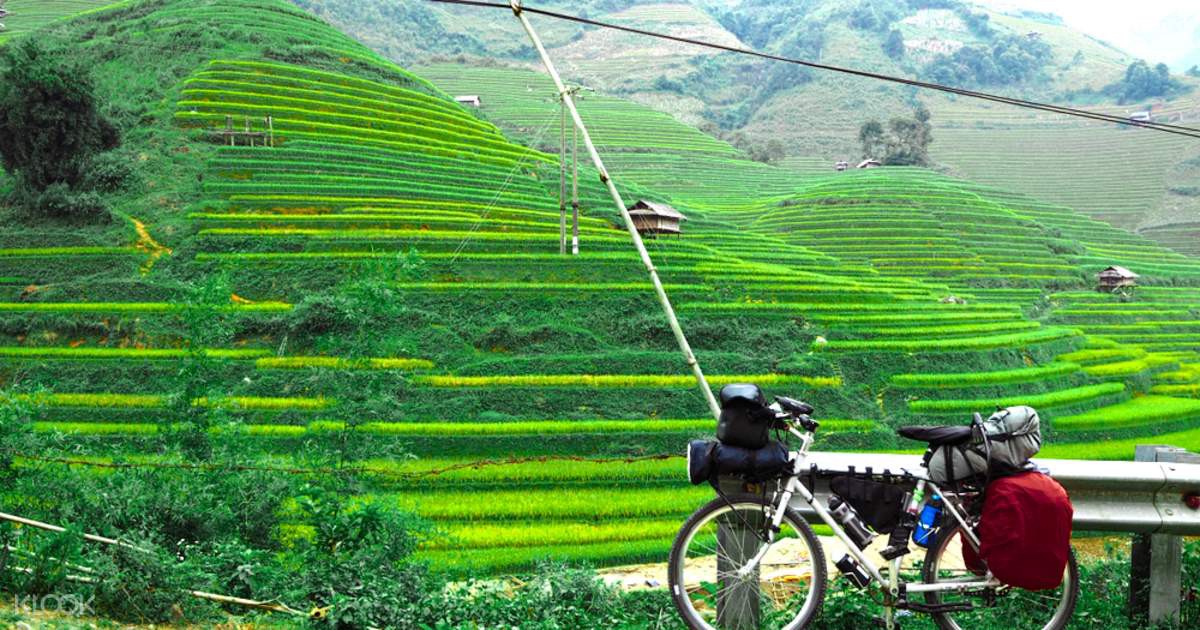
2. Bus
Buses are a convenient and cost-effective way to travel around Vietnam. There are various types of buses available, from local buses to express buses. Local buses are slower, make frequent stops, and are usually overcrowded. Express buses are faster and more comfortable, and they usually have air conditioning and comfortable seats. However, they can be more expensive than local buses.
3. Train
Trains are a popular way to travel between major cities in Vietnam. They are comfortable, affordable, and offer an excellent opportunity to enjoy the scenic countryside. Train travel in Vietnam is divided into several classes, including hard seat, soft seat, and sleeper. Soft sleeper class is the most comfortable and expensive, while hard seat class
What should I pack for a trip to Vietnam?
If you’re planning to visit Vietnam, packing the right items can make all the difference to your trip. The country’s diverse climate and culture require a careful selection of clothes, accessories and essentials to ensure your comfort and safety throughout your journey.
Here’s a list of must-pack items for your trip to Vietnam:
1. Appropriate clothing – Vietnam’s weather can vary significantly depending on the region and season you’re visiting. Pack lightweight, comfortable clothes for the hot and humid climate, including breathable fabrics such as cotton or linen. For cooler months or highland areas, bring warmer layers such as jackets, sweaters or scarves.
2. Comfortable shoes – Expect to walk a lot in Vietnam, so pack comfortable walking shoes or sandals. You’ll also want to bring water-resistant shoes if you’re planning to explore areas prone to rain or flooding.
3. Travel documents – Don’t forget to bring your passport, visa, travel insurance, and other necessary documents. It’s also a good idea to have digital copies or backups of these important documents in case of loss or theft.
4. Medications and toiletries – Bring any prescription medications you need, along with over-the-counter remedies for common ailments such as headaches, stomach aches or allergies. Also, pack sunscreen, insect repellent, wet wipes, and toilet paper, as these may not always be available in public restrooms.
5. Electronics – Vietnam has a 220-volt power supply, so bring a power converter and adapter
What are the popular dishes to eat in Vietnam?
Vietnamese cuisine is known for its abundance of fresh ingredients, complex flavors and textures, and unique cooking techniques. Whether you’re a foodie or just looking to try something new, Vietnam offers a wide variety of delicious dishes to satisfy any palate. Here are some popular Vietnamese dishes that you must try:
1. Phở (pronounced ‘fuh’): Phở is a Vietnamese noodle soup that is made with a flavorful broth, rice noodles, herbs, and meat (usually beef or chicken). This dish is a staple in Vietnam and is often enjoyed for breakfast or lunch.
2. Bánh mì: Bánh mì is a Vietnamese sandwich made with a crispy baguette, pickled veggies, cilantro, meat (usually pork or chicken), and a variety of sauces. It’s the perfect option for a quick and tasty snack.
3. Gỏi cuốn: Gỏi cuốn are Vietnamese spring rolls that are made with rice paper, fresh herbs, vermicelli noodles, and meat (usually shrimp or pork). They are typically served as appetizers and can be enjoyed with a variety of dipping sauces.
4. Bún chả: Bún chả is a popular Vietnamese dish that consists of grilled pork, rice noodles, fresh herbs, and a sweet and savory dipping sauce. It’s a great option for a filling and flavorful meal.
5. Cà phê đá: Cà phê đá is Vietnamese
Are there any health and safety risks in Vietnam?
As with any country, there are health and safety risks to be aware of when traveling to Vietnam. By taking proper precautions, however, you can minimize your risk and enjoy a safe and healthy trip.
One of the biggest health risks in Vietnam is motorbike accidents. It’s common for locals and tourists alike to rent motorbikes to explore the country, but the roads can be chaotic and accidents are frequent. If you do choose to rent a motorbike, make sure you wear a helmet and drive defensively.
Another health risk in Vietnam is food and waterborne illnesses. It’s important to stick to bottled or filtered water and to be cautious about the food you eat. Make sure fruits and vegetables are properly washed and cooked, and avoid street vendors who may not have proper sanitation practices.
Mosquito-borne illnesses are also a concern in Vietnam, including dengue fever and malaria. Be sure to use mosquito repellent and wear protective clothing, especially during the rainy season.
In terms of safety, petty theft is a common problem in tourist areas. Keep your valuables close and be cautious in crowded areas. Scams targeting tourists are also common, such as fake taxi drivers or tour guides. Always confirm prices and make sure you’re dealing with a reputable company or individual.
Overall, with proper precautions and awareness of potential risks, Vietnam can be a safe and enjoyable destination for travelers.

Are there any cultural customs I should be aware of when traveling to Vietnam?
Yes, when traveling to Vietnam, it is important to be aware of and respect the local cultural customs. Here are some key customs to keep in mind:
1. Greetings: In Vietnam, it is customary to greet each other with a bow or a nod rather than a handshake, especially with elders or those in positions of authority. It is also polite to address people using their title and last name, such as “Mr.” or “Madam.”
2. Dress code: When visiting religious sites or government buildings, it is important to dress modestly and cover your shoulders and knees. In general, it is best to dress conservatively, especially in rural areas.
3. Removing shoes: Vietnamese people often remove their shoes before entering homes, temples, or other sacred places. If you see a pile of shoes outside a door, it is a sign that you should remove yours as well.
4. Table manners: When dining with Vietnamese people, it is polite to wait for the oldest or most senior person to start eating before you begin. It is also customary to take small portions of food and try everything that is offered.
5. Gift-giving: If you are invited to someone’s home, it is customary to bring a small gift as a token of appreciation. Good gifts include fruit, flowers, or sweets.
By being aware of and respecting these cultural customs, you can show your appreciation for Vietnamese culture and make a good impression on the locals.

